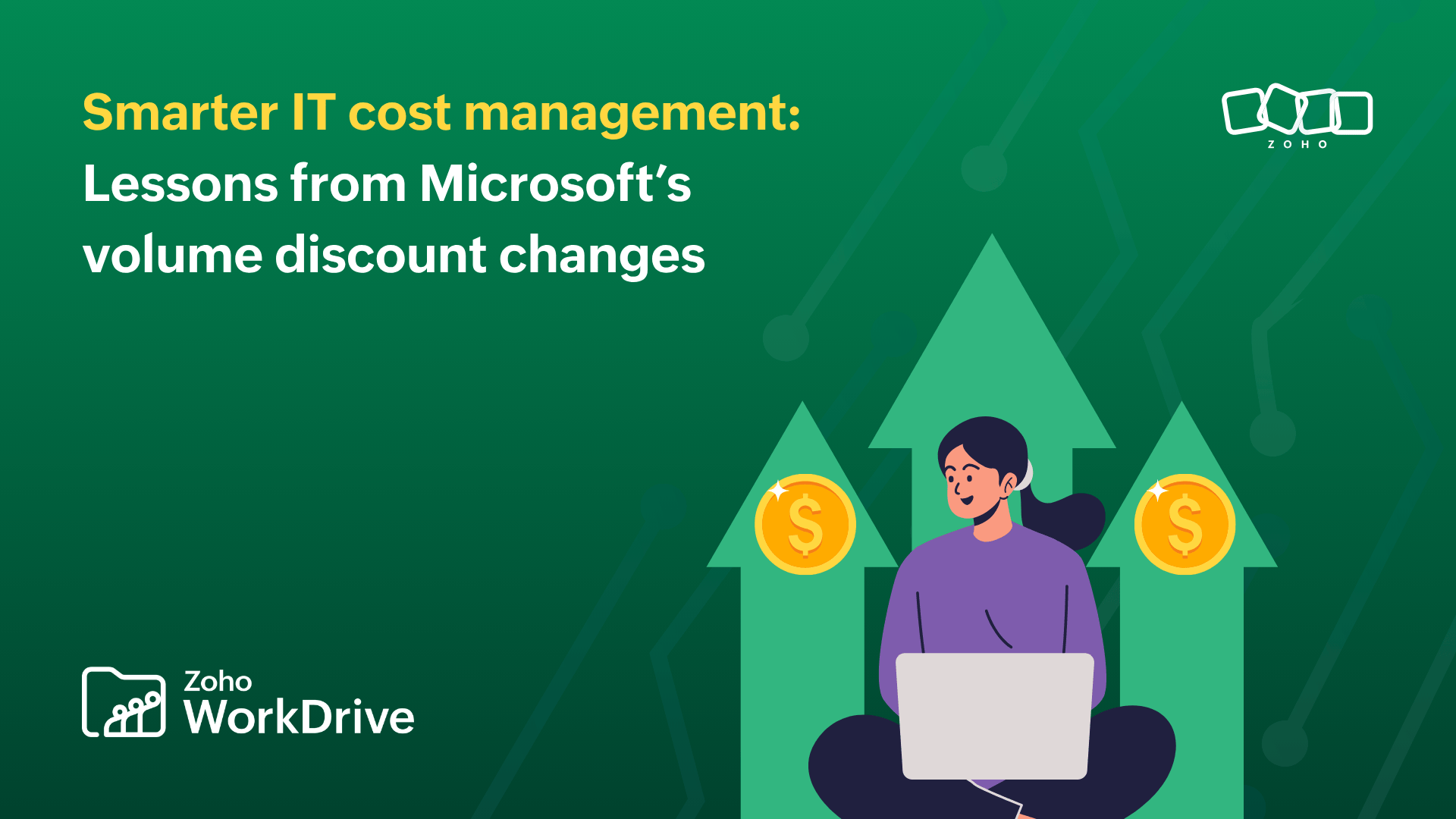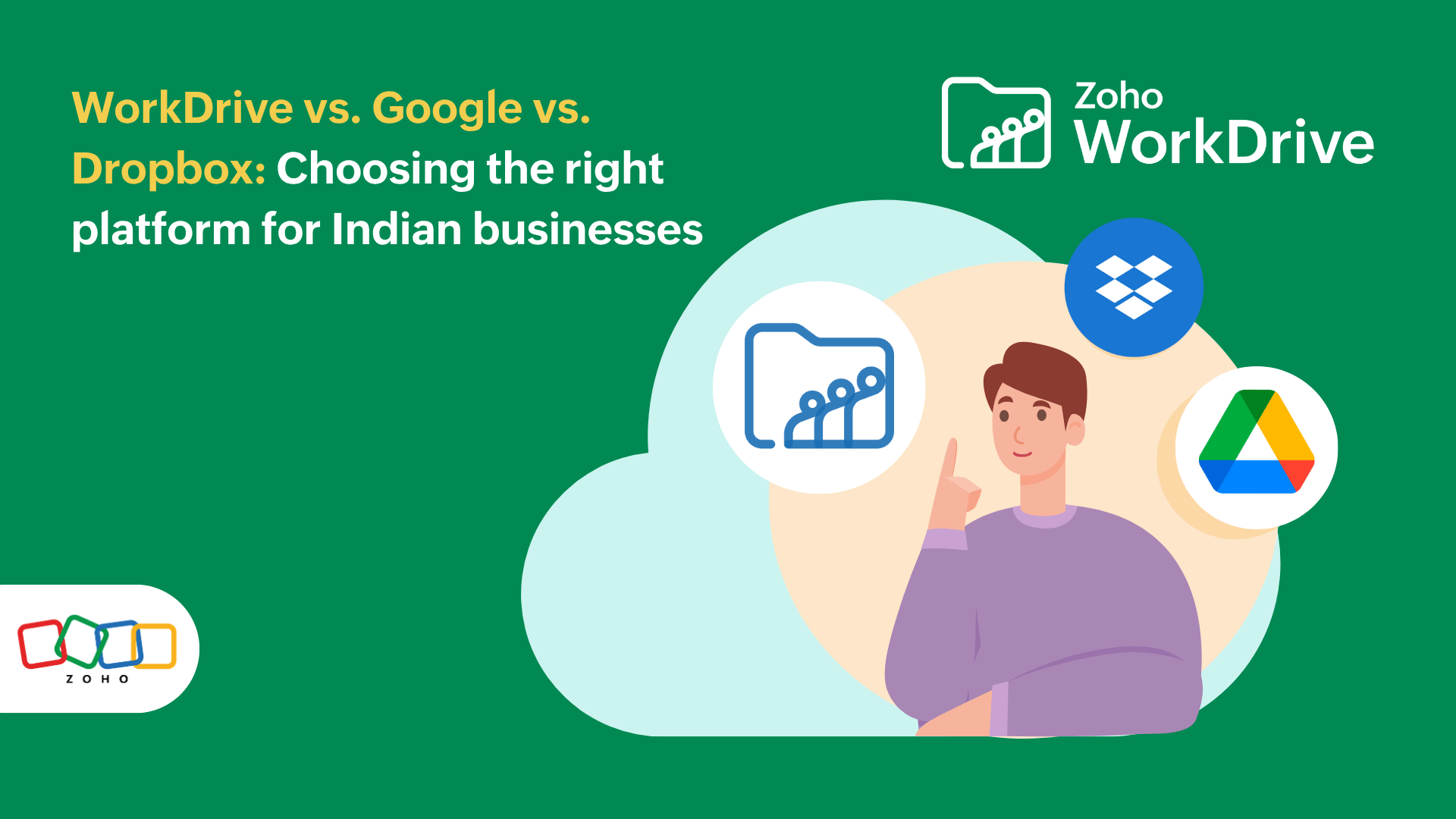Microsoft’s volume discount changes: A wake-up call for IT cost management
- Last Updated : October 31, 2025
- 151 Views
- 3 Min Read

Managing IT expenses has become an essential function for every modern business. As organizations rely more on technology, failing to manage IT costs can quickly reduce profit margins. Rising subscription fees, changing pricing models, and new technology adoption all contribute to growing IT expenses.
A recent example is Microsoft’s discontinuation of traditional volume-based discounts for online services such as Microsoft 365 and Office 365, which could significantly impact businesses of all sizes.
The key to staying ahead is to review your IT spending strategy. With effective IT cost management, you can identify inefficiencies, cut unnecessary expenses, and stay financially prepared for pricing shifts like these.
Why does IT cost management matter?
IT cost management helps organizations understand where their money goes, what delivers value, and what can be optimized. It’s not just about reducing expenses but also spending wisely. Without a structured approach, businesses risk overpaying for licenses, subscriptions, and cloud services.
Even small oversights can accumulate over time, and larger organizations may face millions in unplanned expenses. Effective IT cost management ensures that every technology investment which the organization makes delivers value, not unnecessary cost.
A case in point: Microsoft volume discounts ending
Starting November 2025, Microsoft will discontinue its traditional volume-based discounts for online services such as Microsoft 365, Office 365, and other cloud subscriptions. Organizations that once enjoyed discounts of up to 12% will now pay the public rate across the board.
Here's what that means:
Who’s affected: Customers on Enterprise Agreements (EA), MPSA, and OSPA (China)
What’s ending: Tiered pricing levels (B, C, and D) for online services
What it means: Every customer pays the Level A list price, regardless of size
What’s not changing: On-premises software discounts remain; education and U.S. government pricing are excluded
Financial impact: Small and medium businesses could see thousands of dollars in additional yearly costs, while large enterprises may face hundreds of thousands or millions in extra costs.
Bottom line: Businesses will be paying more for the same services, with no added value.
Source: Microsoft – online services pricing consistency update
How to navigate this (or any) change?
When pricing changes hit, being prepared makes all the difference. Businesses that monitor IT spending and plan ahead can adapt smoothly without disrupting their operations.
Below are a few practical ways to manage IT costs and stay in control:
1. Audit your current spending
Review all active subscriptions, software licenses, and cloud services. Identify what’s underused, duplicated or inactive seats and downgrade features that aren't needed. Managing this can lead to significant cost reductions.
2. Explore alternative solutions
If a price hike makes a tool less affordable, compare alternatives that deliver similar features and value at a lower cost.
3. Negotiate strategically
When renewing contracts or subscriptions, review the terms instead of accepting list pricing. Many vendors are open to discussions that can add value, such as extra features, credits, improved support, or training sessions, without necessarily increasing your costs. Businesses can also negotiate long-term agreements with the vendors to unlock better pricing. Negotiating strategically helps ensure your organization gets the most out of every IT investment.
4. Use cost management tools
Invest in solutions that track spending patterns, monitor usage, and send alerts for unusual cost spikes.
5. Budget for the unexpected
Maintain a 10–15% buffer in your IT budget to accommodate potential price increases or sudden technology needs. This financial cushion ensures you stay prepared for unforeseen expenses without disrupting operations.
6. Revisit your IT roadmap annually
An annual review of your IT roadmap ensures technology decisions align with your company’s evolving goals. It’s a way to confirm that your investments still deliver value and budgets are directed toward the right priorities.
7. Educate and train employees
Provide regular training sessions to ensure your employees use IT tools efficiently. Well-informed employees can make better use of subscriptions, avoid mistakes, and help prevent unnecessary spending.
In conclusion
Managing IT costs today is more than just cutting costs, it's more about maximizing the return on every technology investment. Businesses that plan proactively can make informed decisions that support the organization's long-term growth. By adopting this approach, firms not only protect their budgets but also empower their teams, support innovation, and position themselves for sustainable success in a rapidly changing digital landscape.


